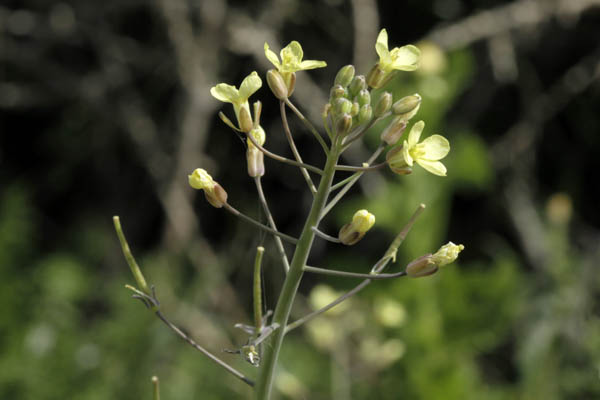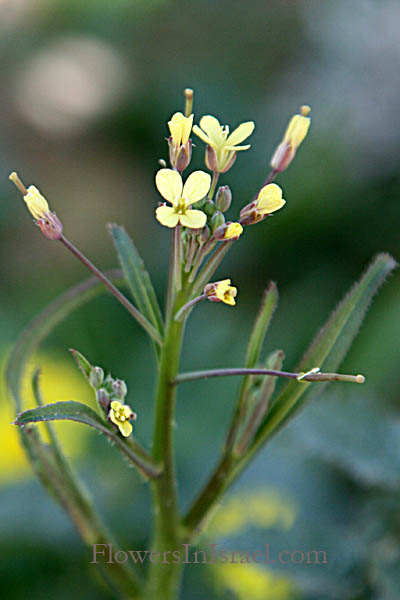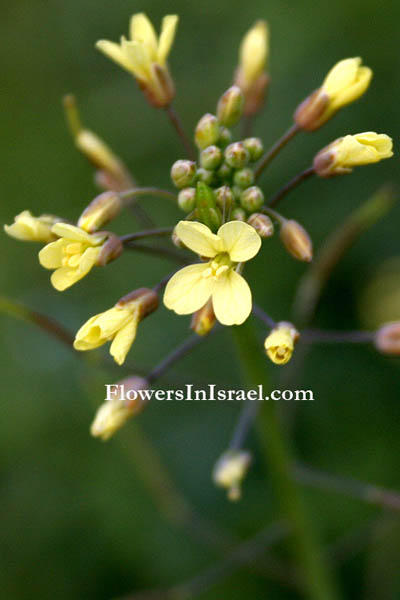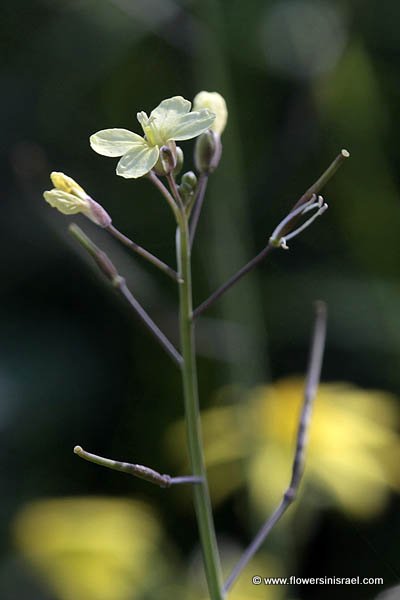Hebrew: כרוב החוף, Arabic: خردل بري - قراص, Egypt: شلطام "Shiltam"
| Scientific name: | Brassica tournefortii Gouan | |
| Common name | Tournefort's Mustard, Asian mustard | |
| Hebrew name: | כרוב החוף | |
| Arabic name: | خردل بري - قراص | |
| Egypt: | شلطام "Shiltam" | |
| Family: | Cruciferae (Brassicaceae), מצליבים |

Location: Sharon Beach National Park |
| Life form: | Annual | |
| Stems: | 70 cm; hairs on lower stem ± dense, stiff, white | |
| Leaves: | Alternate, rosette arrangement, dissected, dentate or serrate leaves | |
| Flowers: | Sepals suberect; pale yellow petals 5-7x1.5mm, small and narrow | |
| Fruits / pods: | Siliqua; dark reddish brown; reticulations prominent silvery lines; interspaces small | |
| Flowering Period: | January, February, March, April, December | |
| Habitat: | Sand | |
| Distribution: | The Mediterranean Woodlands and Shrublands, Semi-steppe shrublands, Shrub-steppes, Deserts and extreme deserts | |
| Chorotype: | Mediterranean - Saharo-Arabian | |
| Summer shedding: | Ephemeral |

Derivation of the botanical name: Brassica, the classical Latin name for cabbage. tournefortii, named for Joseph Pitton de Tournefort (1656—1708), French botanist who was professor of botany at the Jardin des Plantes in Paris. The Hebrew name: כרוב החוף, cruv hahof, cruv, cabbage; hahof, coast.


|